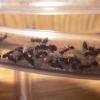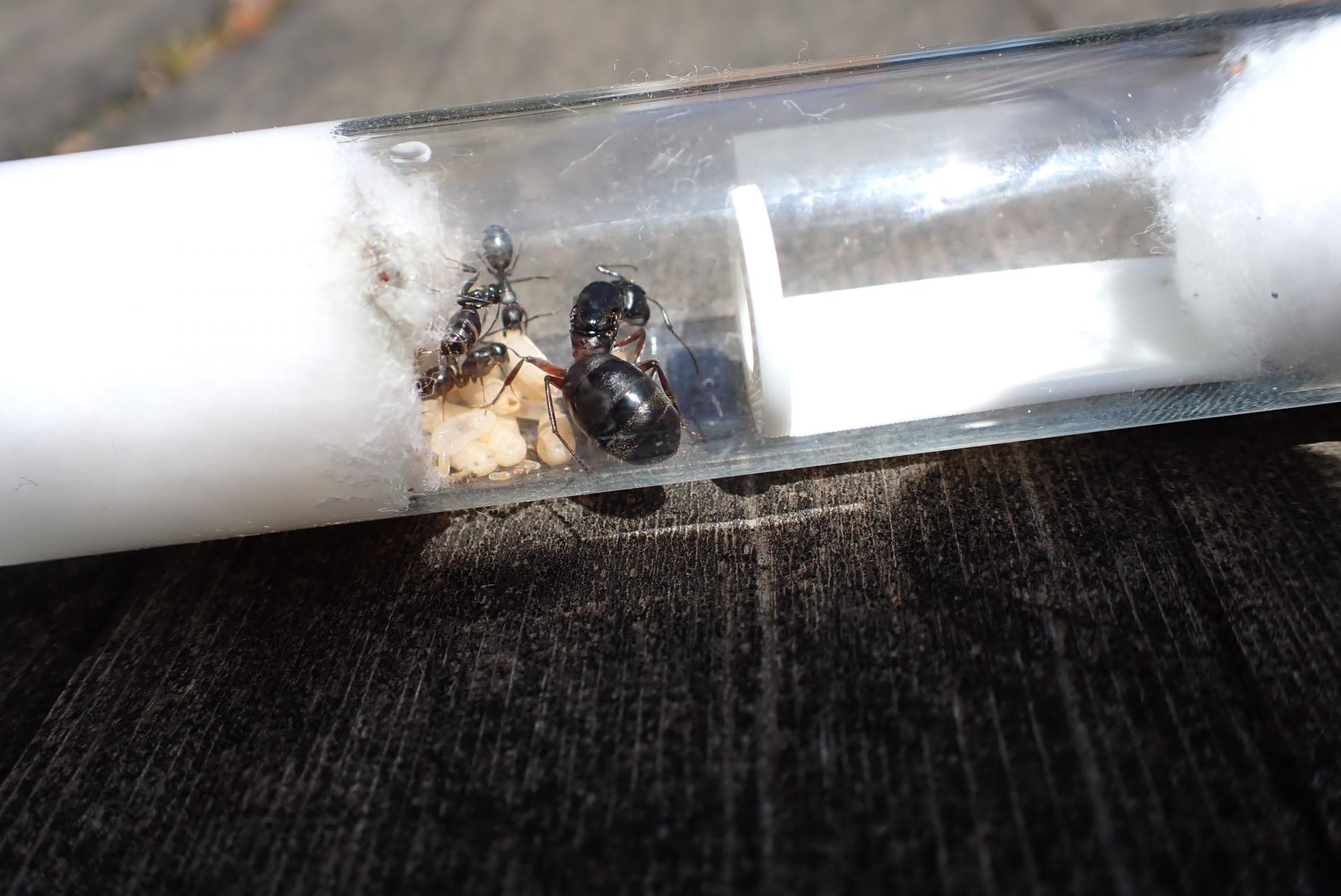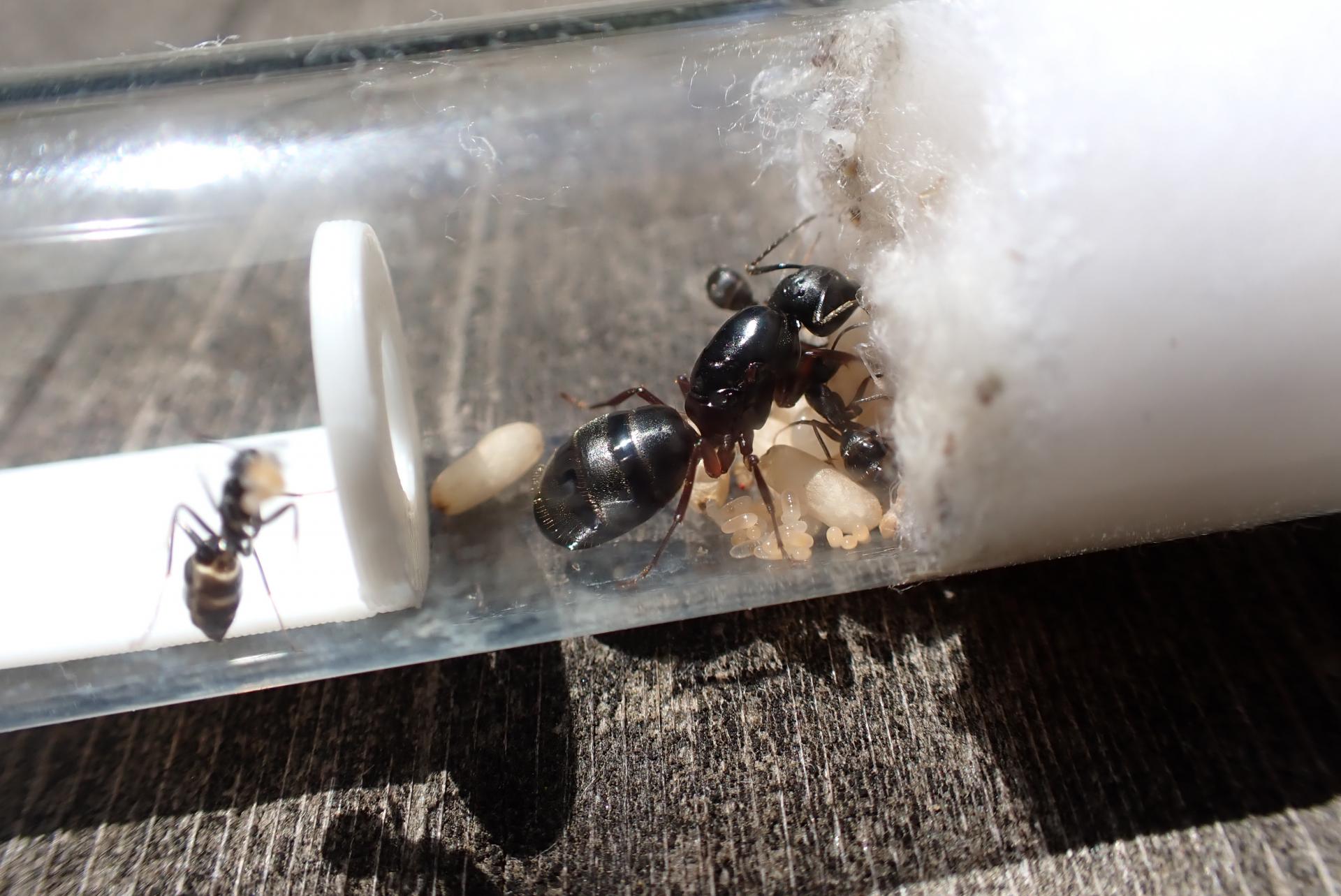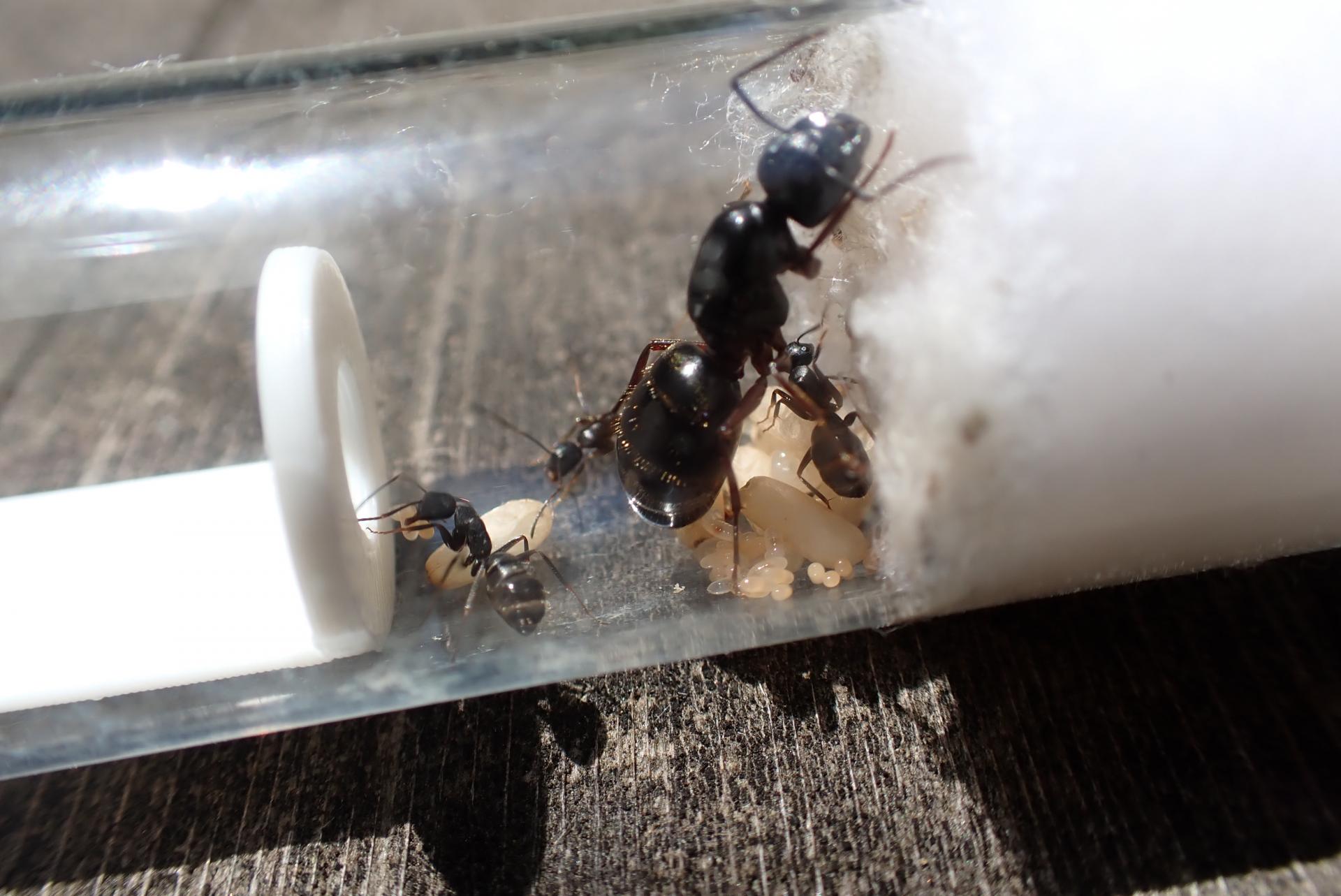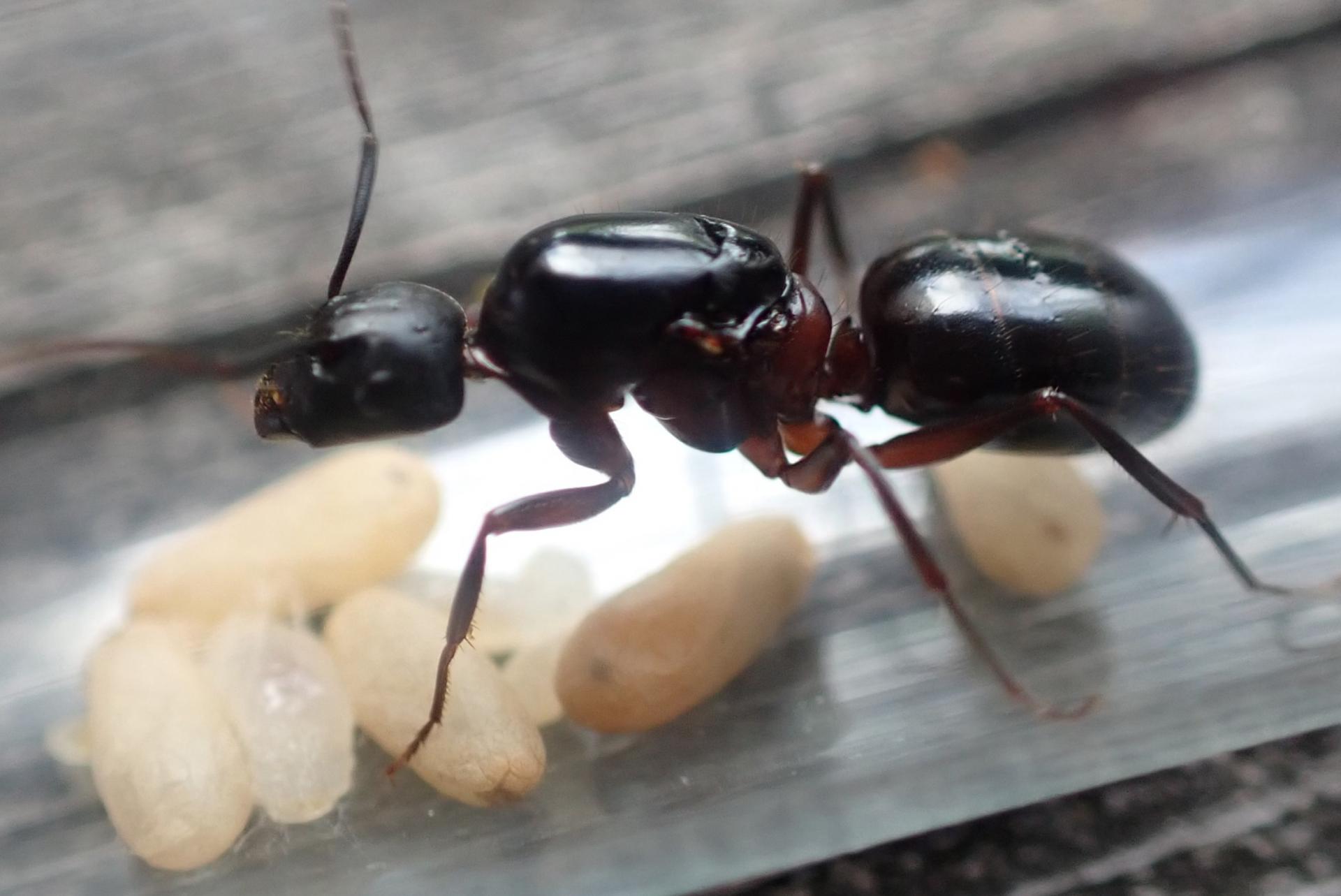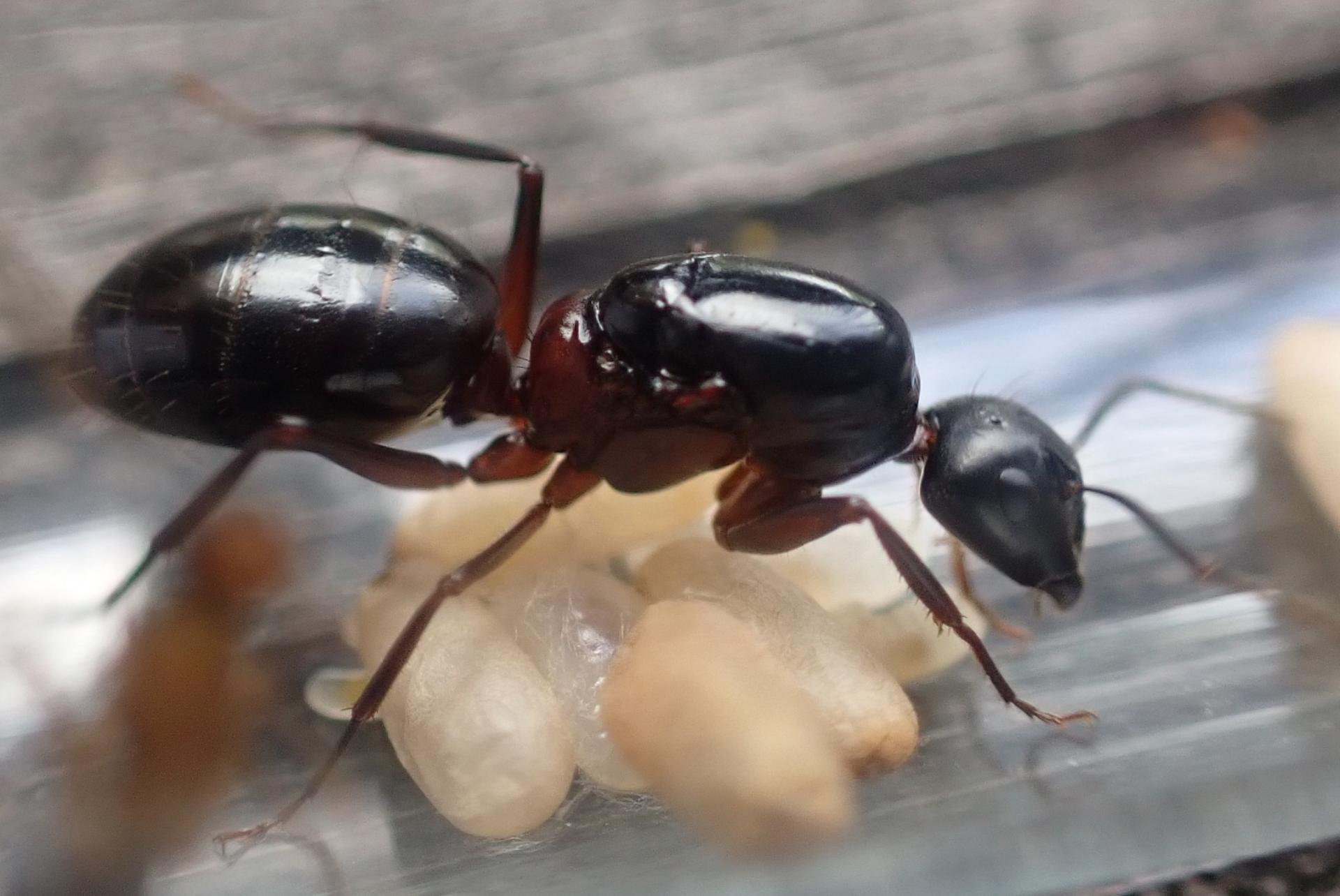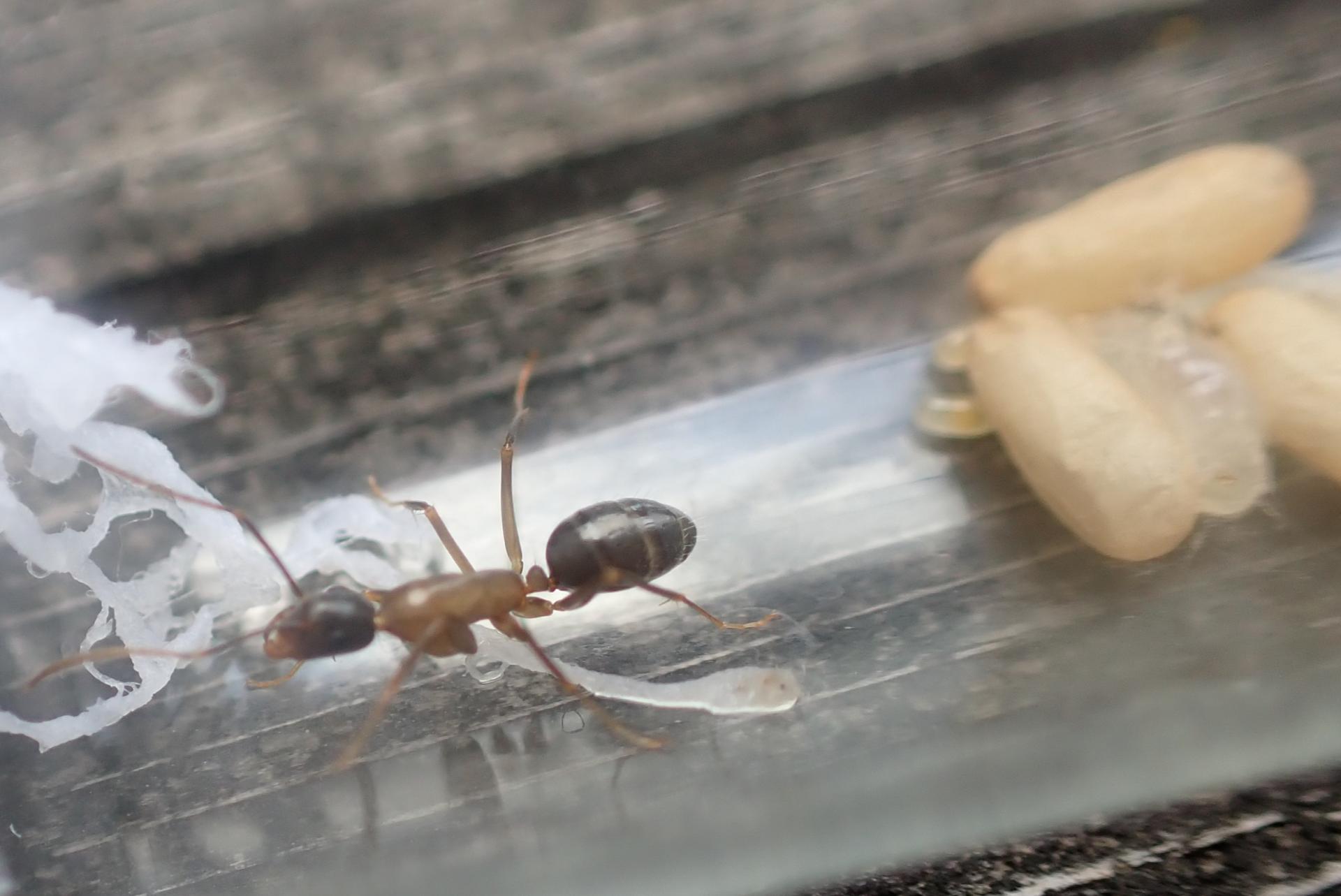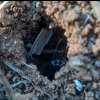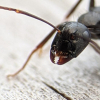Ants_Dakota's Camponotus sp. Journal
Entry 1: Camponotus modoc
7/13/2025
Background
The following is excerpted from RushmoreAnts Camponotus journal, found here.
Camponotus modoc is a species in the subgenus (Camponotus). Like C. vicinus, it is found throughout the western United States and Canada. These are a species of carpenter ant, with colonies frequently nesting in and under rotting wood. A common misconception with carpenter ants is that they eat wood. While this is true of termites, who both eat and nest in wood, ants lack the enzymes necessary to digest wood, and instead only nest in it. Colonies will occasionally nest in soil under stones, though this is the exception, not the rule. They seem to be slightly more adaptable than C. vicinus, nesting in a wide variety of habitats from forests, mountains, and open plains, wherever there is wood to inhabit. They are similar to and related to Camponotus pennsylvanicus, whose range trends east of C. modoc. Most C. modoc populations are west of the Rocky Mountains, while most C. pennsylvanicus populations are east of the Rockies. There are some regions where the two species overlap, however. The Black Hills of South Dakota, of which I am well acquainted, is east of the Rockies yet still in the western United States. This allows large populations of both C. modoc and C. pennsylvanicus to co-exist, a rare exception to the east-west divide. C. pennsylvanicus have predominantly black legs and shiny golden hair covering the inferior portion of the abdomen. C. modoc lack the golden hair and are less hairy on their abdomens overall. They have bright red legs and slightly larger heads. Other than that, both species are dull black and quite similar in appearance and behavior and thus are often confused. Workers are 6-14 mm and polymorphic, while queens are 15-18 mm. Colonies are generally monogynous and quite aggressive to any living thing that is not her own workers.
Their diet is omnivorous like all Camponotus species. Workers may tend farms of aphids which produce sweet nectar which the ants consume. In exchange, the ants protect the aphids and move them to prime locations for feeding and breeding. I have personally observed Camponotus modoc majors sitting on top of Formica fusca sp. group nests and hunting the Formica workers as they enter and exit the nest. The majority of Formica fusca sp. group colonies I encounter in the Black Hills have at least one C. modoc major atop the nest hunting workers at midday. C. modoc is the dominant Camponotus species in the Black Hills, being found on nearly every hill and in far more abundance than any other Camponotus species.
This is an excellent overview of the species, and many thanks to RushmoreAnts for letting me use it. There are a few things I would like to add.
William Mackay published an excellent revision to the Camponotus genus entitled: New World Carpenter Ants of the Hyperdiverse Genus Camponotus, Volume 1: Introduction, Keys to the Subgenera and Species Complexes and the Subgenus Camponotus. It is an great resource for any Camponotus keepers and IDers who want to know more about their specific species, and I would recommend a skim through it. One of the more interesting observations Mackay made was the presence of a closely related group of Camponotus within the Camponotus herculeanus group. The four species are Camponotus pennsylvanicus, Camponotus modoc, Camponotus herculeanus, and Camponotus chromaiodes. Because they are so similar, it is easy for ant keepers to get them confused. Hopefully this journal will help some get a positive ID on their colony.
Resources
Journals:
THG's Camponotus modoc journal - Page 6 - Ant Keeping Journals - Ants & Myrmecology Forum
KB's Camponotus Modoc Journal - Discontinued - Ant Keeping Journals - Ants & Myrmecology Forum
Adak's 2nd Camponotus Crusade (NEW Journal) - Ant Keeping Journals - Ants & Myrmecology Forum
Despite how common the species is, I could only find a few detailed and worthwhile journals. Of special note is RushmoreAnt's (Adak) Camponotus Crusade, as the Camponotus modoc in his journal are from the same location, the Black Hills, and were caught at the same time, so comparing the two colonies' growth is going to be interesting and informative.
Articles:
Care Sheet - Camponotus pennsylvanicus - Ant Care Sheets - Ants & Myrmecology Forum (Applicable to C. modoc as well)
Camponotus modoc - Navajo Nature
Carpenter Ant (U.S. National Park Service)
Camponotus pennsylvanicus (Eastern Black Carpenter Ant) Care Sheet – Canada Ant Colony (Applicable to C. modoc as well)
In a blast from the past laboratory experiment (done in 1985), colonies of Camponotus modoc produced between 2 and 10 workers by the first winter, a good mark for ant keepers who want to know if their colonies are more or less productive than the average.
My colony:
I caught this queen on May 31st with RushmoreAnts in the Black Hills. Two of our queens were found nesting under rocks and one was found under rotting wood. The colony has grown far quicker than the Camponotus vicinus queens we caught at the same time, and currently has 7 pupae, 3 large and medium larvae, and a batch of 10 to 15 eggs. The colony also has its first 3 nanitics, which is really exciting! It is currently on pace to blow the 2 to 10 worker average from the 1985 experiment away.
A fat and freshly fed queen
Noticeably red legs and propodeum
A large brood pile
Future Plans:
I plan on moving this colony into a Tar Heel Ants Mini Hearth when they outgrow their test tube.
Want your own colony of Camponotus?
I have several species in stock in my shop: Ants_Dakota's Ant Shop(Nationwide Shipping) - General Market Place - Ants & Myrmecology Forum
At the time of writing this the permits to ship them nationally are still pending but will likely be granted in several weeks!

